Free Wavy Desktop Wallpapers!
DreamPrints is excited to announce the release of its latest collection of FREE desktop “wavy abstract” wallpapers. This exclusive offering includes 45 stunning designs. Created using Midjourney version 5.2, each wallpaper showcases a harmonious blend of flowing lines, vibrant colors, and captivating patterns.
DreamPrints is excited to announce the release of its latest collection of FREE desktop “wavy abstract” wallpapers. This exclusive offering includes 45 stunning designs. Created using Midjourney version 5.2, each wallpaper showcases a harmonious blend of flowing lines, vibrant colors, and captivating patterns.
Is AI art “real art”?
A debate has been raging lately about whether images generated with tools such Midjourney can ever be considered “real art”. Find out why it should, and how history is repeating itself.
The Debate
AI-generated art, such as the type that can be produced using tools like Midjourney or Stable Diffusion, has garnered a lot of attention recently for its ability to create seemingly human-like works of art. However, there is ongoing debate about whether or not AI-generated art should be considered "real art."
Some argue that AI-generated art cannot be considered real art because it lacks the human touch and creativity that is essential to the creation of true art. They argue that AI-generated art is simply a byproduct of algorithms and data, and therefore lacks the depth and emotion that is characteristic of human-created art.
Others argue that AI-generated art should be considered real art because it represents a new form of creative expression. They point out that AI-generated art is often created through a process of trial and error, where the AI system is given a set of parameters and then allowed to experiment with different combinations until a desired result is achieved. This process is similar to the way that humans create art, and therefore should be considered a valid form of creative expression.
History repeats itself
Stacks of Wheat (End of Summer) by Claude Monet
Despite arguments to the contrary, there are several historical parallels that suggest that AI-generated art should be considered real art. For instance, the Impressionist movement of the late 19th century was characterized by a loose, spontaneous style of painting that was created using new techniques. Similarly, the abstract expressionist movement of the mid-20th century was characterized by the use of bold, expressive brushstrokes and non-representational forms. Both of these movements were revolutionary at the time and were initially met with skepticism and resistance, yet they are now considered important and influential movements in the history of art.
The advent of photography in the 19th century is another historical example. At the time, photography was seen as a threat to traditional forms of art such as painting and drawing, as it allowed people to easily create and reproduce images without the need for artistic skill. However, over time, photography has come to be seen as a valid form of artistic expression, with many photographers achieving recognition and success for their work.
Similarly, the works of artists such as Andy Warhol have also helped to establish the idea that art can be created using new technologies and techniques. Warhol is known for his use of silkscreen printing, which allowed him to create mass-produced works of art that were identical to one another. This process was seen as a departure from traditional forms of art, yet Warhol's works have become some of the most iconic and influential of the 20th century.
These examples show that art has always evolved and adapted to new technologies and techniques, and AI-generated art should be seen in the same light. While it may be different from traditional forms of art, it represents a new form of creative expression that should be valued and respected.
Great Artists Steal
Picasso as a young man
The quote "good artists borrow, great artists steal" is often attributed to Pablo Picasso, although it is unclear if he was the first to express this idea. T.S. Eliot's critical works also discuss the role that artistic theft plays in the creation of new art. This idea is likely much older and can be seen in the work of Shakespeare, who borrowed plotlines and entire scenes from other writers for his own plays. Artistic movements are often characterized by thematic and technical similarities due to the deliberate imitation of influential artworks. Regardless of who first proposed this idea, it is widely accepted as a fundamental truth in the creation of new knowledge.
One assertion that is often made about AI-generated art is that it is essentially stealing because the data sets that are used to generate the art often include works by other artists. This argument suggests that AI-generated art is not original or authentic because it is based on the work of others.
However, this argument fails to acknowledge the fact that no artwork has ever been created in a vacuum. All art is influenced by the cultural, social, and historical context in which it is created, and artists have always drawn inspiration from the work of others. For example, the Impressionist movement was influenced by the work of earlier artists such as John Constable and J.M.W. Turner, and the abstract expressionist movement was influenced by the work of artists such as Pablo Picasso and Henri Matisse.
Furthermore, it is not uncommon for artists to incorporate elements from other artworks into their own creations. For instance, the artist Marcel Duchamp famously used a urinal as a ready-made object in his artwork "Fountain," which challenged traditional notions of what could be considered art. Similarly, the artist Sherrie Levine has created a series of works in which she replicates famous artworks by artists such as Marcel Duchamp, Pablo Picasso, and others, raising questions about authenticity and originality in the art world.
In the end, the argument that AI-generated art is stealing because it is based on the work of other artists is flawed. All art is influenced by the work of others, and the use of data sets that include copyrighted works should not disqualify AI-generated art from being considered real art.
What makes an image “art”?
Whether AI-generated art is considered "real art" is ultimately subjective and depends on the context in which it is created and evaluated. In general, it is important to consider the intent of the artist, as well as the cultural and market environment in which the artwork is presented.
For example, some AI-generated art may be created with the intention of simply showcasing the capabilities of the AI system, while others may be created with the intention of communicating an idea or emotion to an audience. Similarly, the cultural and market environment in which the artwork is presented can also influence how it is perceived.
One way to think about AI-generated art is to compare it to photography. Not all photographs are considered art. For instance, family snapshots are generally not considered art, while works by well-known photographers such as Ansel Adams or Dorothea Lange are. The difference between these two types of photographs lies in the intent of the photographer and the context in which they are presented. Family snapshots are typically created for personal use and are not intended to be presented to a wider audience as art, while the works of well-known photographers are often created with the intention of communicating ideas or emotions to an audience and are presented in galleries or other public spaces as art.
Ultimately, people decide
The determination as to whether AI-generated art is considered “real art” will be up to real people. There is no single individual that will decide for everyone what is art and what isn’t. In the end, if enough people find artistic value in some of these images, it’s safe to say that at least some of them will be considered “real art”.
Without question, tools like ChatGPT and Midjourney are currently causing a lot of controversy. I expect that the debate around these technologies will continue well into 2023 and beyond as it becomes more mainstream and entrenched into all of our lives. Debate is good. Let’s keep the conversation going.
What do you think?
Do you agree that AI-generated images can be considered “real art”, or do you see it as a threat to real artists? Let me know what you think in the comments below.
Prompts and Circumstance
When it comes to generative AI tools like Midjourney, the quality of your prompts help determine the quality of the images you’ll generate. But what actually makes for a high-quality prompt?
When it comes to generative AI tools like Midjourney, the quality of your prompts help determine the quality of the images you’ll generate. But what actually makes for a high-quality prompt? If you scour the internet you’ll find all sorts of advice for which prompts to use to get the best output. I’ve seen artists litter their prompts with long strings of redundant key words that supposedly make the difference between a lack-luster image and a great one.
In this article we’ll take a look at some of these key words to try to determine which ones actually make a difference, and which ones are just being ignored by Midjourney.
Disclaimer:
Midjourney is complex and is always evolving. What I suggest here today may work fine in version 4, but may be irrelevant by the time version 5 or 6 are released.
Moving Target
Using the prompt “a furry kitten” in each version of Midjourney shows how much more capable the tool has become in just a few months.
As I mentioned above, Midjourney is a tool that is being updated regularly. The images that are being produced with V4 weren’t possible with earlier versions. Therefore, it stands to reason that the hoops that artists had to jump through to get decent output from earlier versions of MJ are no longer needed in V4.
8k, 64k, UHD —Oh my!
I’ve often seen artists use keywords such as “8k”, “16k”, or “UHD” to ensure that it will result in more finely-detailed images. Does adding these keywords actually result in better results? Let’s find out.
As you can see, including the keywords “8k” or “16k” has little to no effect.
Highly detailed vs. highly-detailed vs. hyper detailed
Rather than improving the detail and fidelity, adding the keywords “highly detailed” or “hyper detailed” appears to produce strange artifacts that most artists would probably want to avoid. Adding a hyphen between the words seems to lessen the artifacts, but it doesn’t make a dent in improving the detail quality.
So if these keywords don’t have an effect, what does?
Distance from subject
If there’s one sure fire way to get better details from your MJ images it’s getting in close to your subject. Using keywords like “close up shot” or “extreme close up shot” will result in a higher level of detail, while having you subject further away will result in fuzzier details.
Adding the words “macro photography” or “macro lens” will yield similar results but with the added effect of a shallow depth of field:
Describe the details
Rather than littering your prompts with a lot of redundant and useless keywords about “quality”, try describing the details you’re looking to produce.
The two images below are upscaled from remixes of the same prompt “a line of furry kittens” but for the image on the right I added the phrase “soft delicate fur”. While there are still some issues with the kittens as the get further away from the camera, I feel like the overall results tend to be sharper with the added phrase.
Midjourney seems to like it when you embellish details with descriptive words.
What did we learned?
I think there are some clear takeaways here:
Using keywords like “UHD”, “8k”, “64k”, or “hyper detailed” to coax greater detail from Midjourney has zero positive effect, and may actually cause your images to look worse.
The sure-fire way to get the most crisp detail out of your images is to get as close as possible to your subject.
If your composition doesn’t lend itself to being framed close up, then using keywords that help describe details helps MJ in producing the results you’re looking for.
What techniques have you used to get MJ to render fine details and better fidelity?
If you have tips of your own, please share them in the comments below.
Also, if you like my articles, please share the link with others and let me know what other generative AI topics you’d like me to explore.
If you like my article, please check out my fine art prints
Steampunk Alphabet
There’s something strangely alluring about the steampunk aesthetic. It pairs the nostalgia of a bygone era with a kind of sci-fi mystique. With this project I wanted to see if I could use Midjourney to merge this aesthetic with an English alphabet. Check out the results and let me know what you think.
Detail from the Steampunk Alphabet Poster
There’s something strangely alluring about the steampunk aesthetic. It pairs the nostalgia of a bygone era with an old-world, sci-fi mystique.
With this project I wanted to see if I could use Midjourney (version 4) to merge this aesthetic with an English alphabet. I felt that Midjourney did a pretty decent job in many respects. I was pleasantly surprised by how varied the results were. It really got the steampunk look, and it added neat flourishes and embellishments that are really fun. Certain letterforms, however, like the E, I, M, and W, it really struggled with. Often, no matter what my prompt was, it would give me back at least one option that looked like a letter B or R.
Let me know what you think in the comment section below. And if you’re interested in getting a poster of the entire alphabet, it’s available below.
Thanks, Bill
The Generated Steampunk Alphabet Poster is a must-have for any designer or creative professional looking to add a touch of whimsy and uniqueness to their work. This high-quality print features the entire alphabet in a stunning steampunk style, carefully crafted using Midjourney version 4. Includes a note about the prompts used.
This image is available on 16x24, 20x30, 24x36 Prints & Posters












































































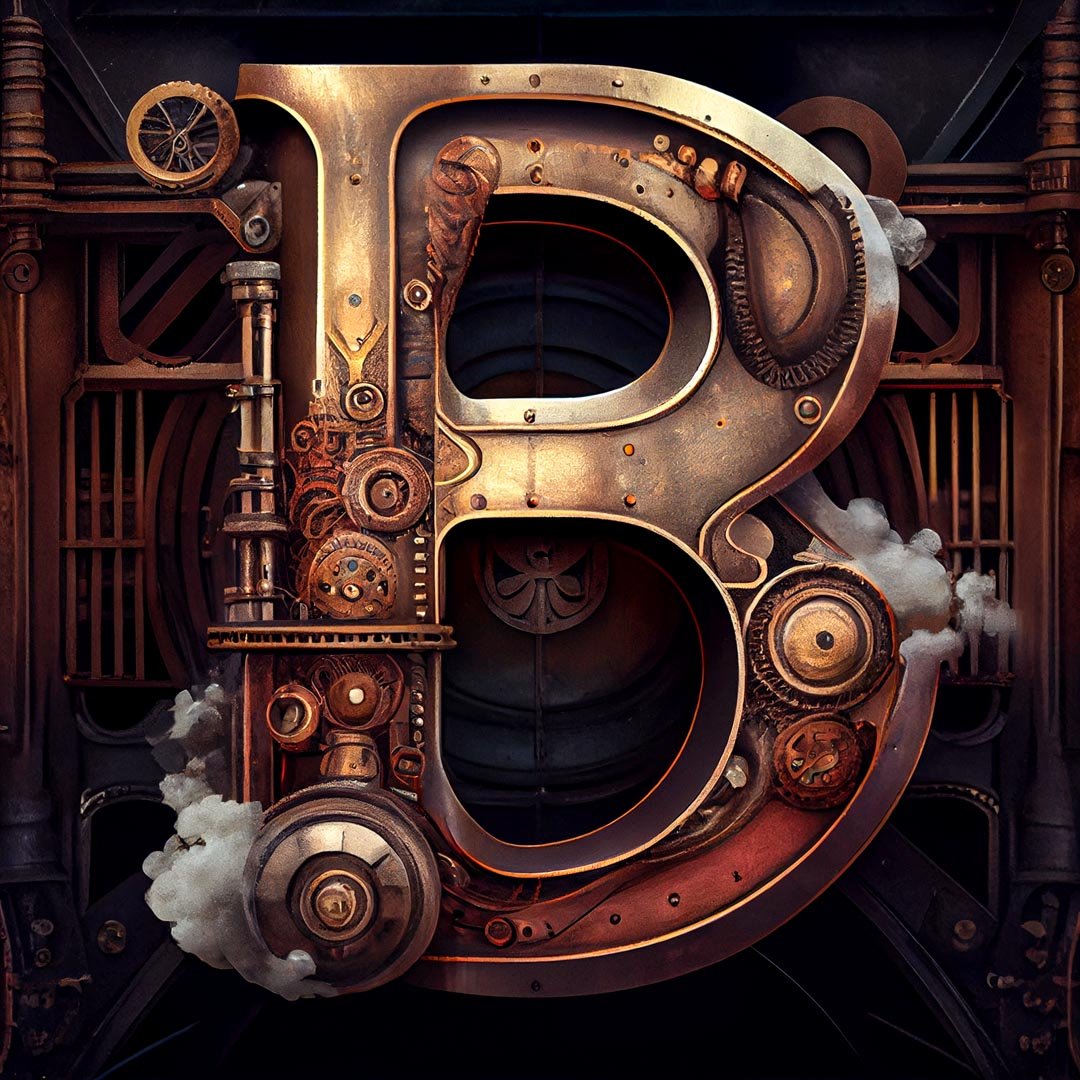

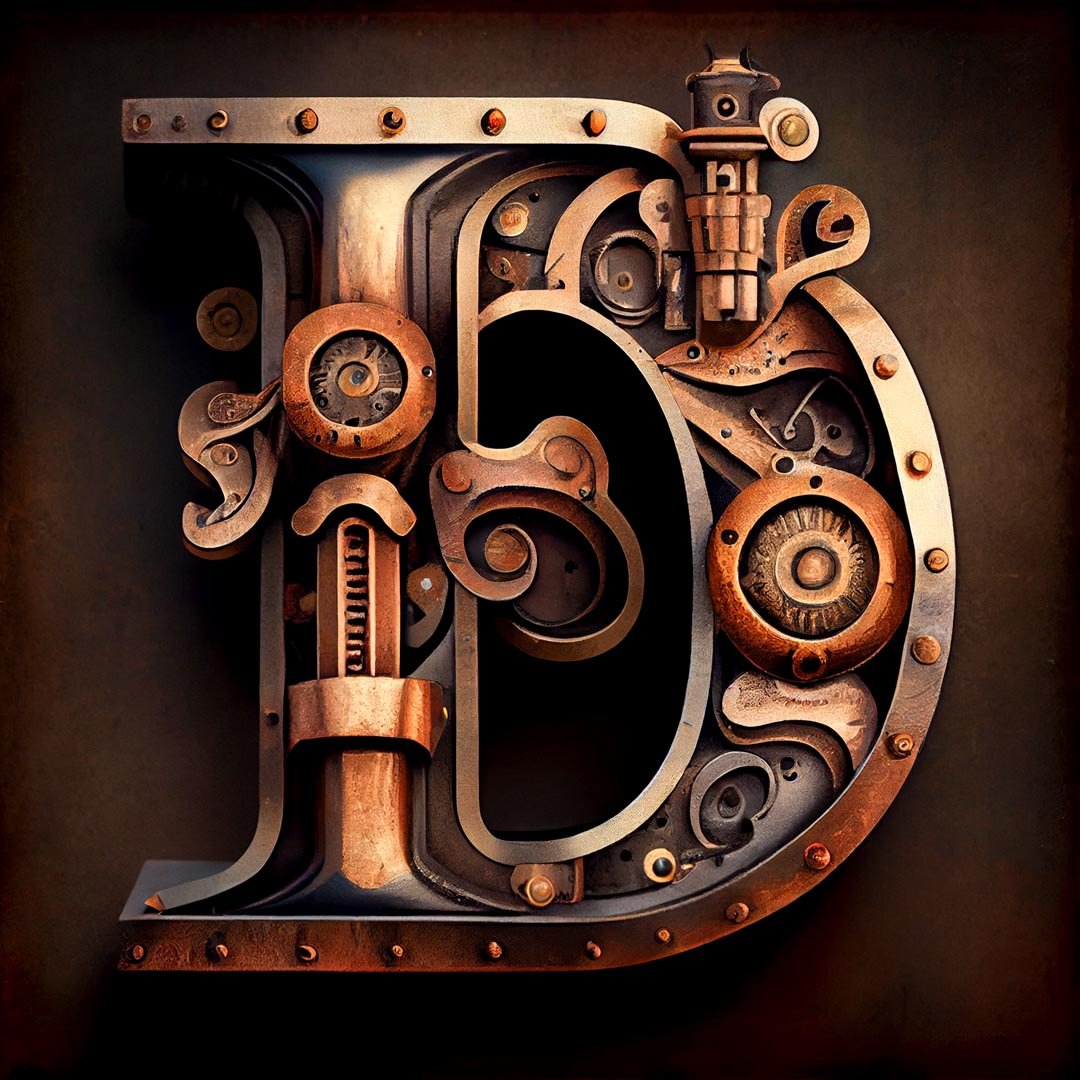
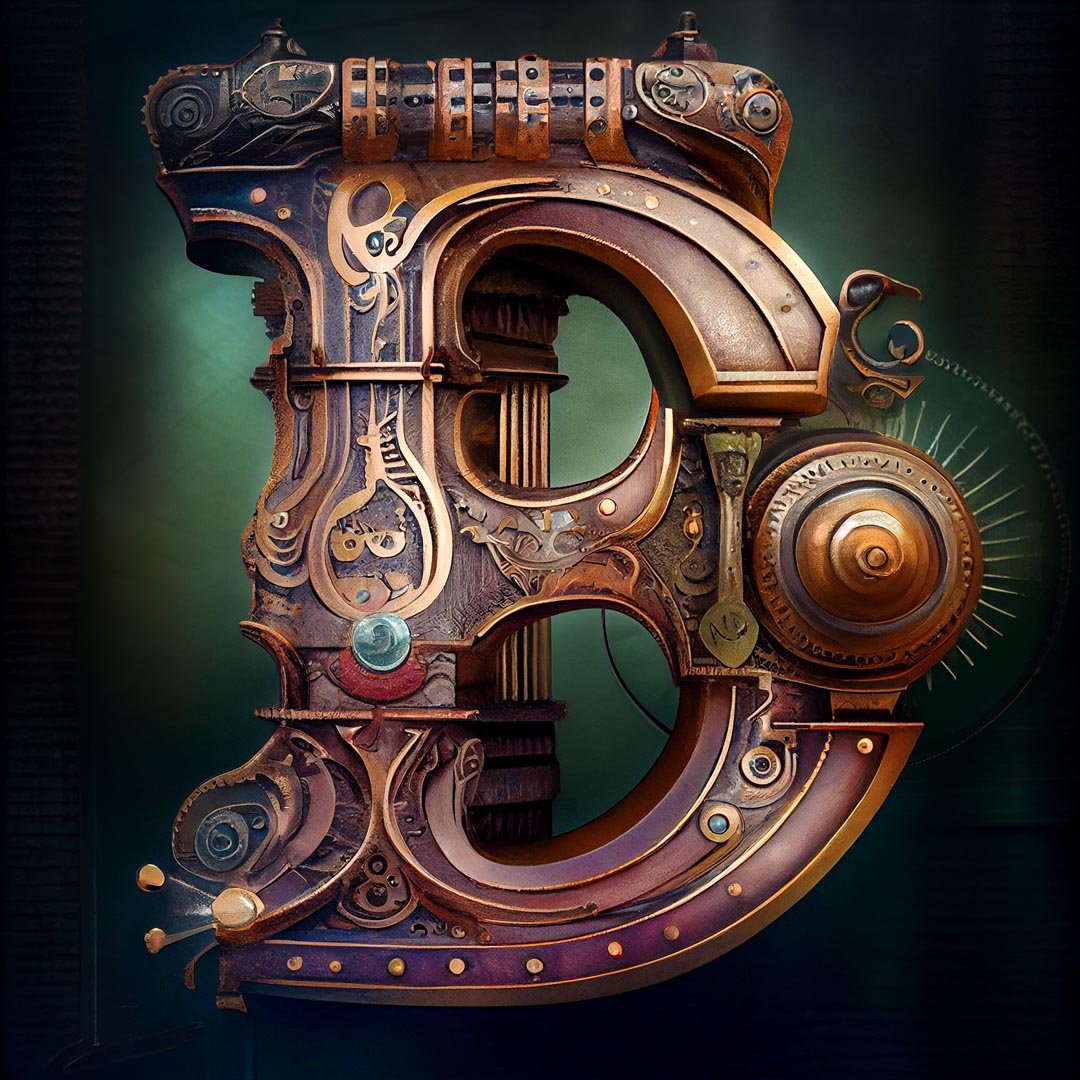
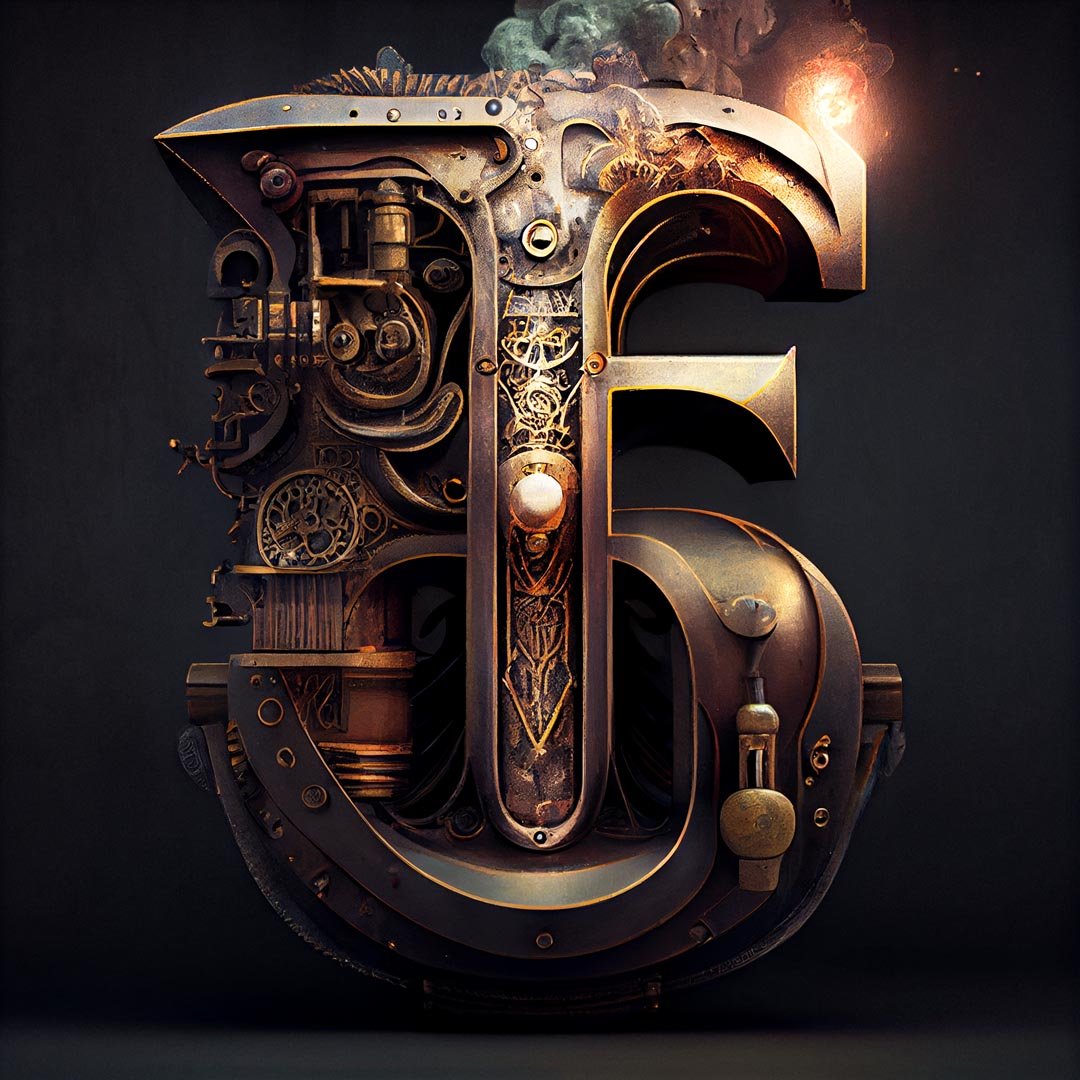
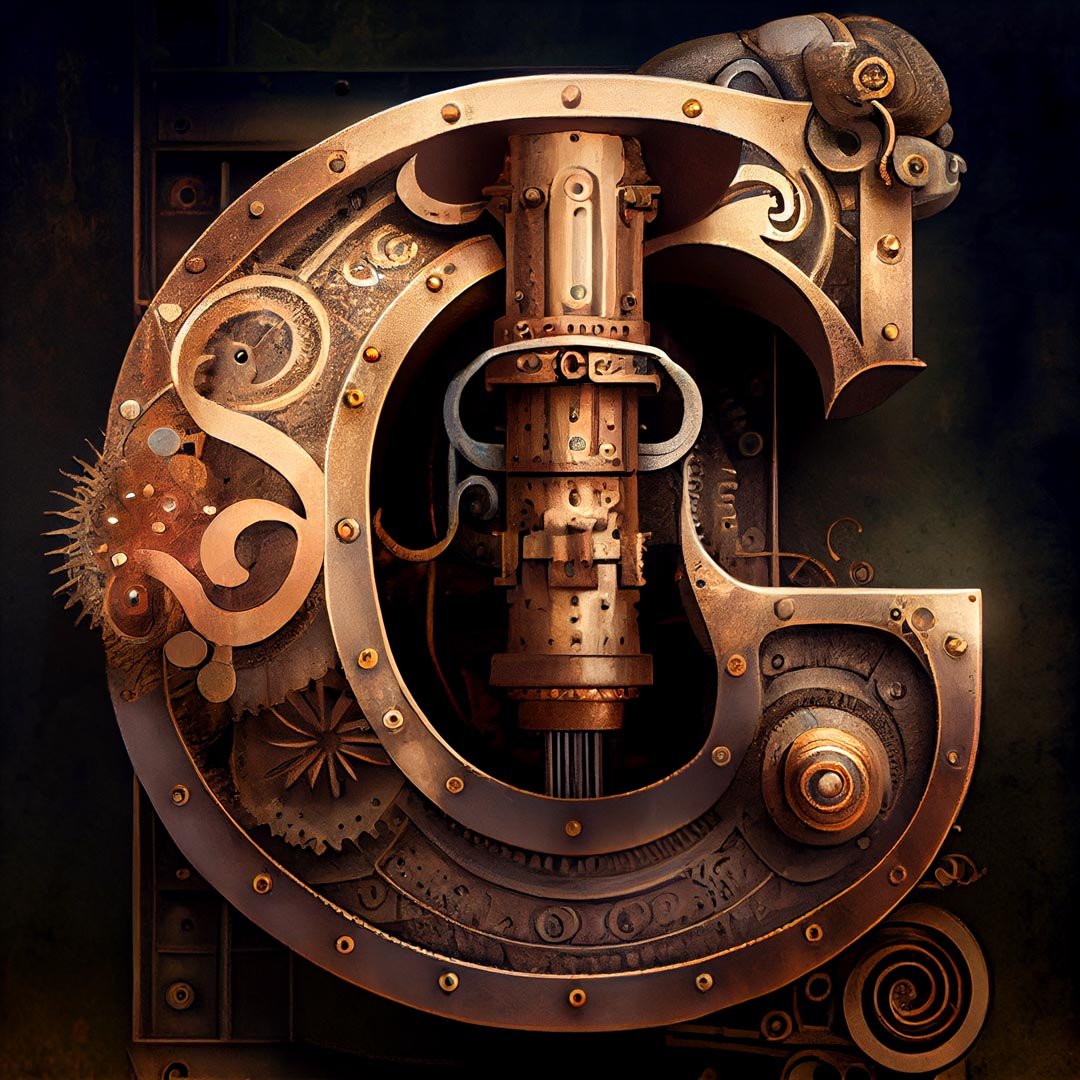
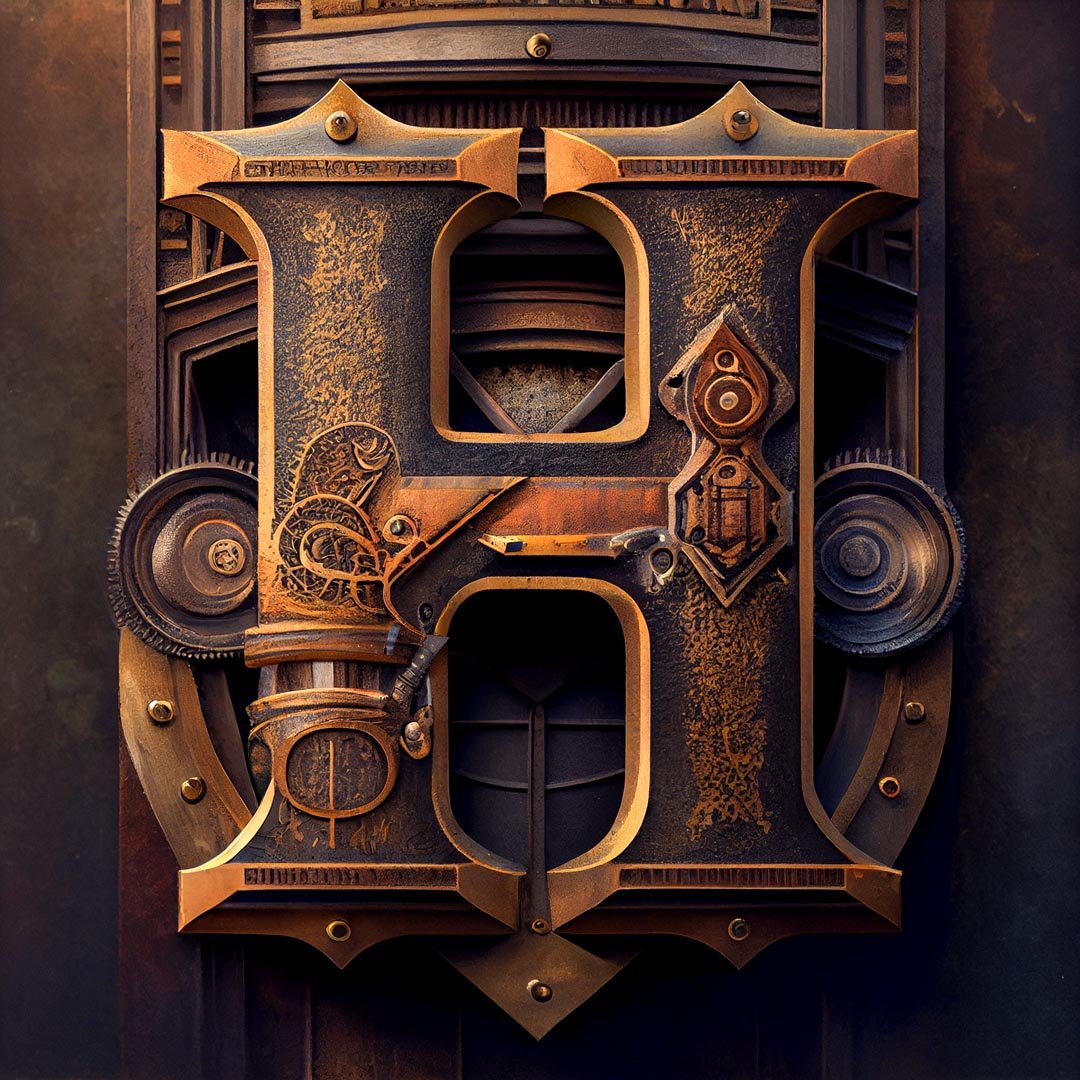



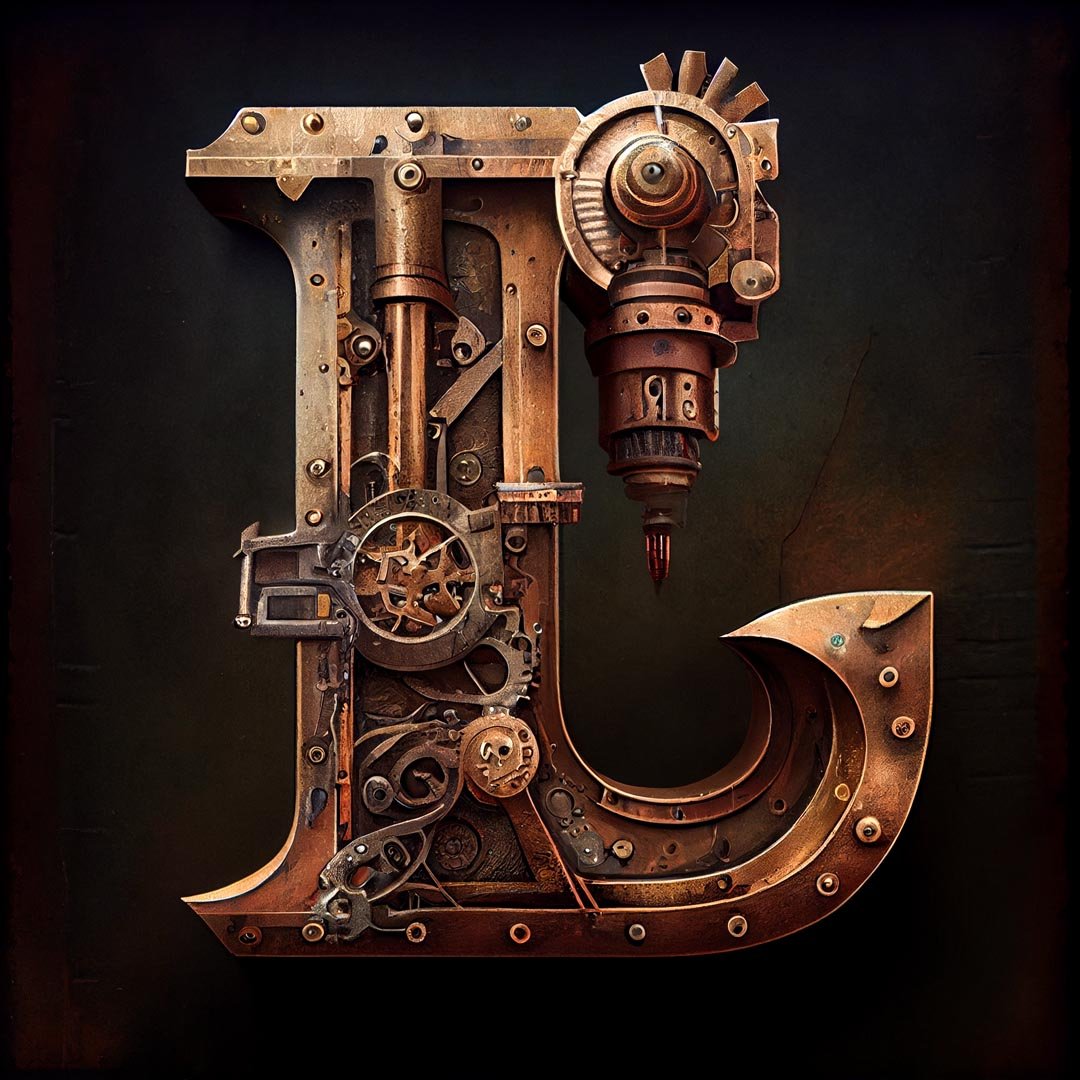


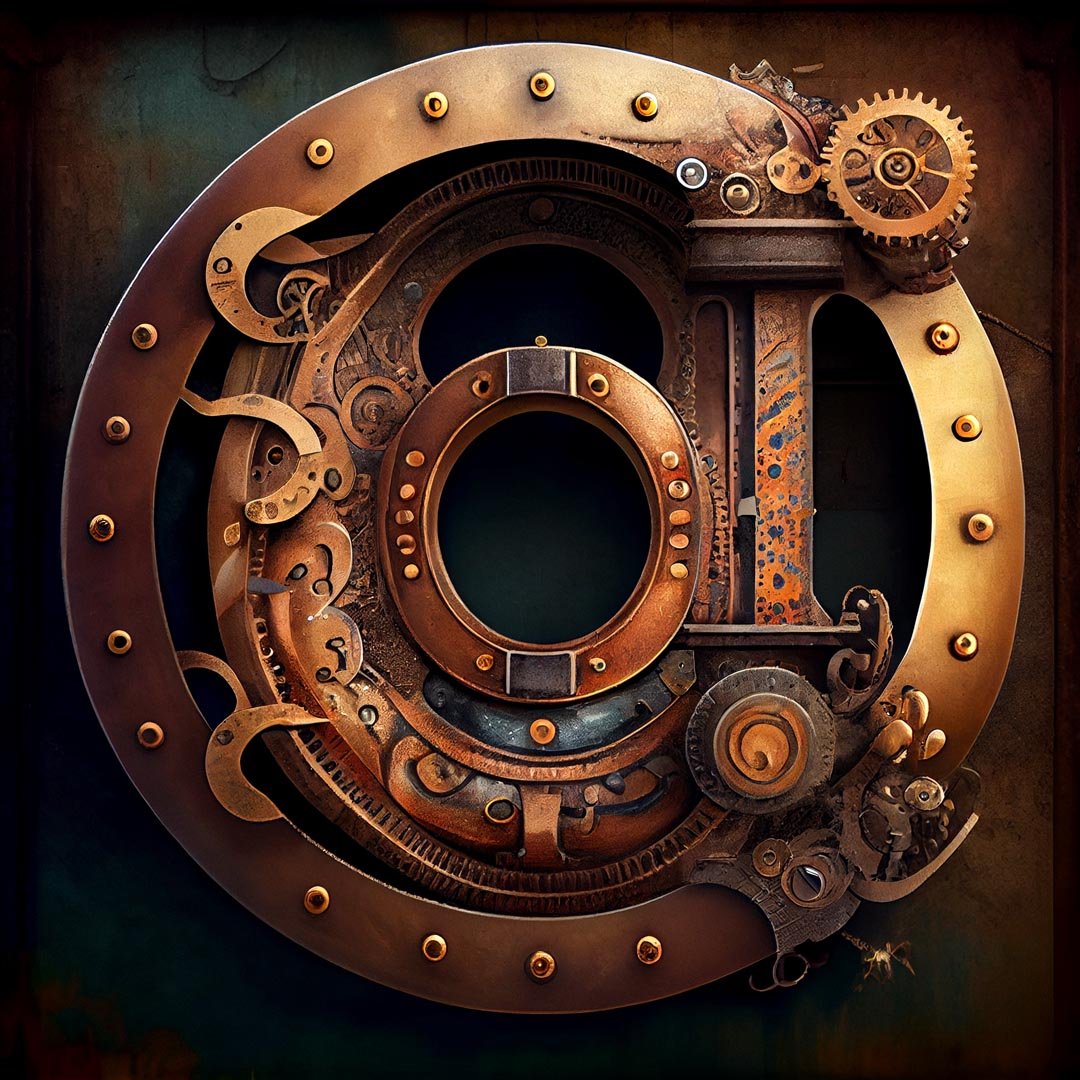


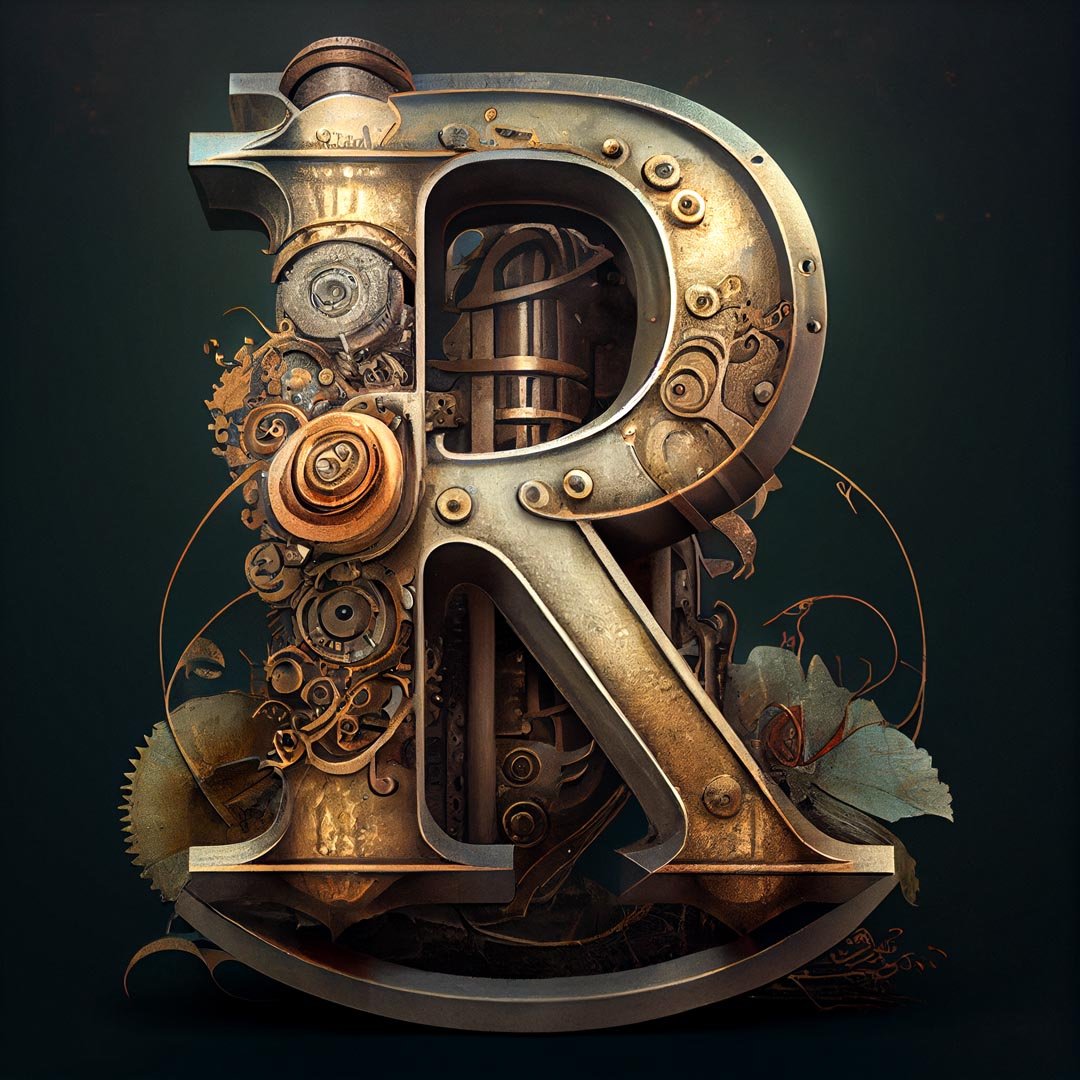
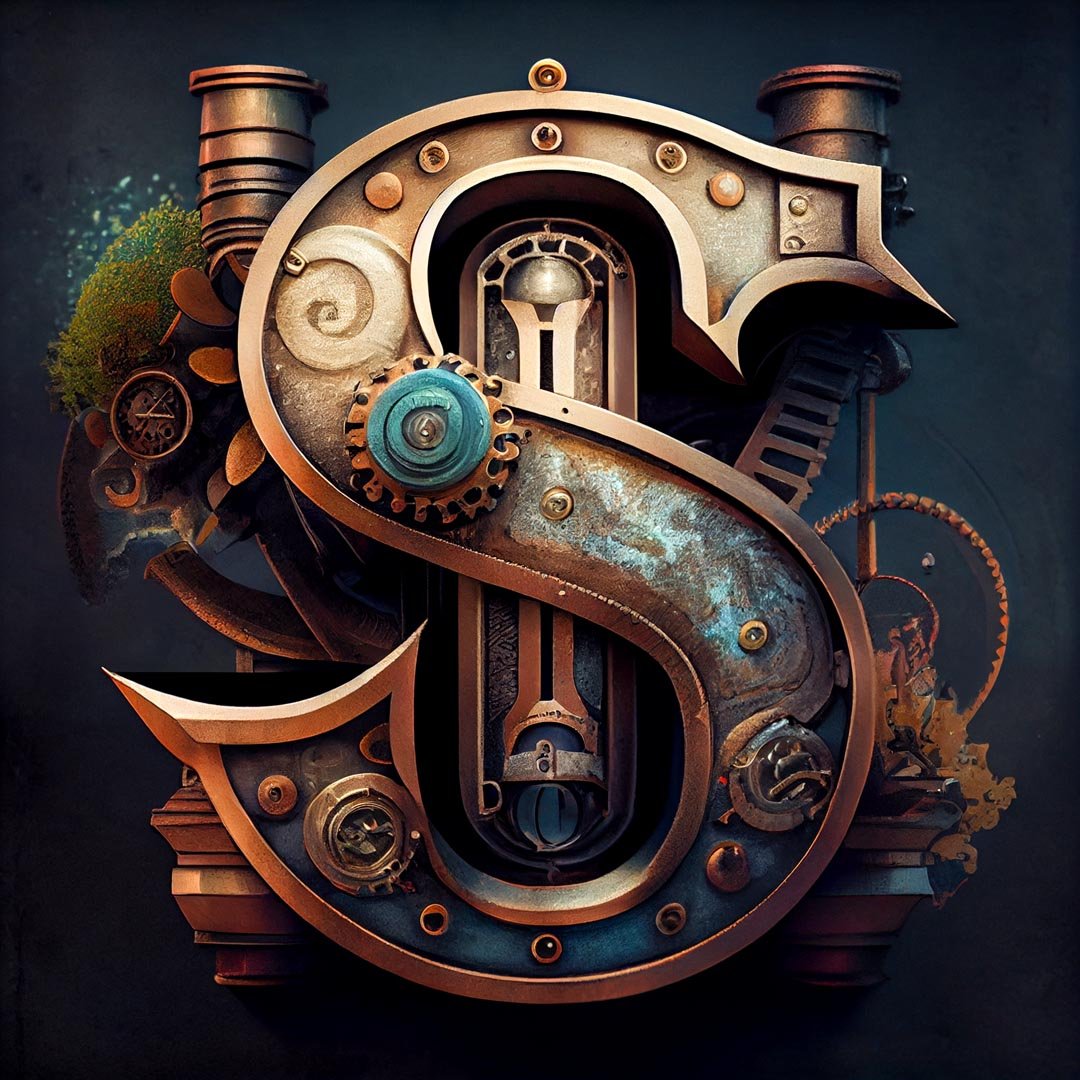

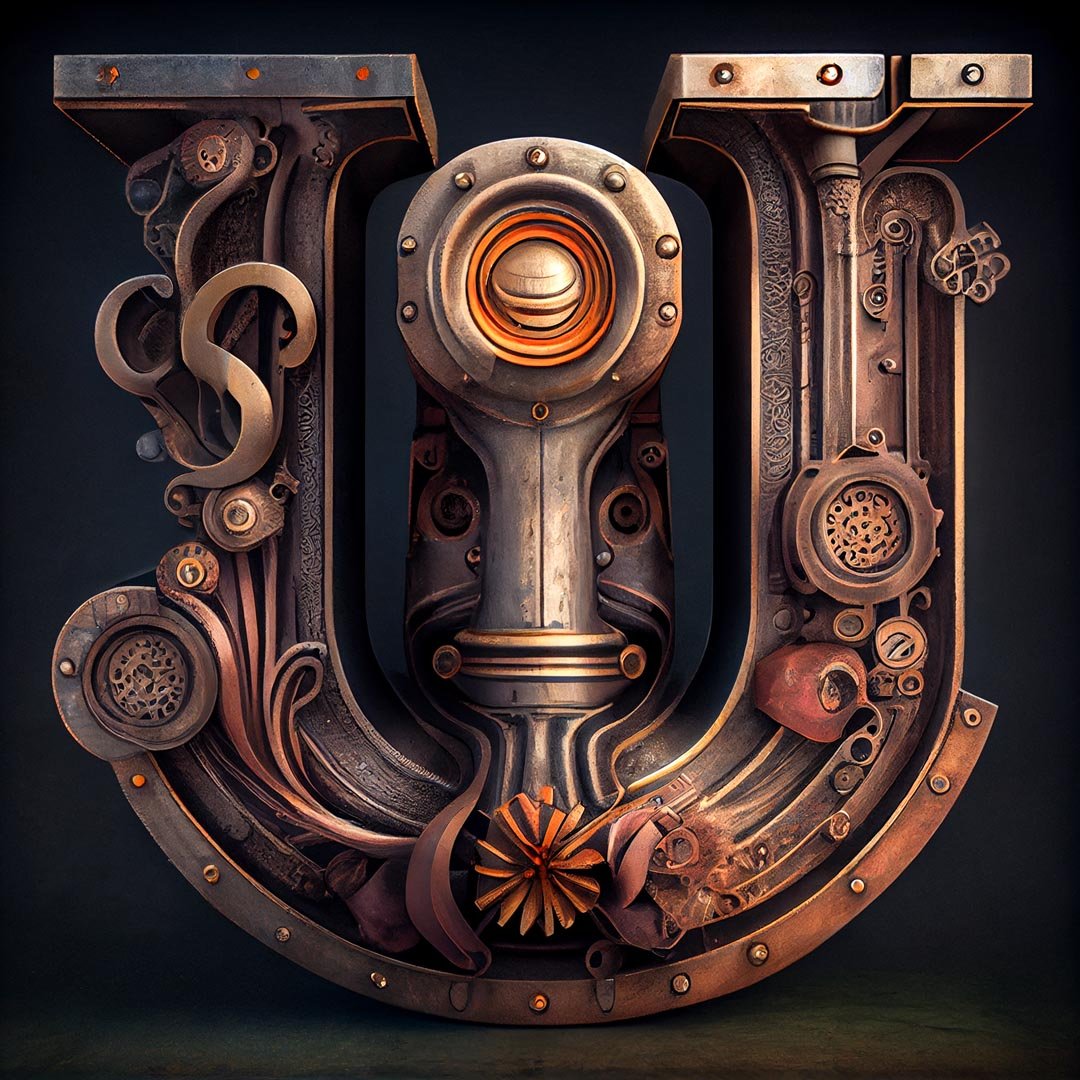

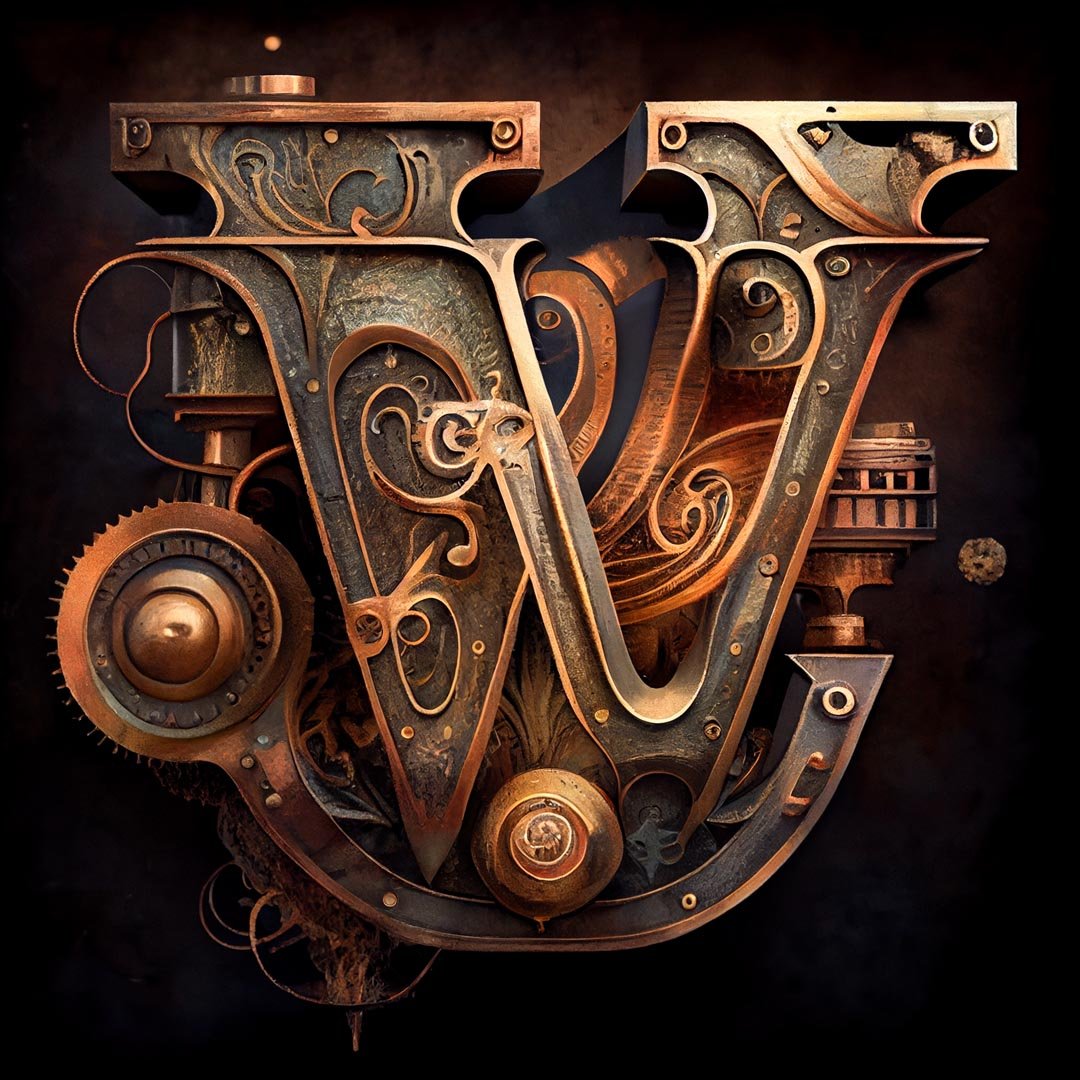






Escape to a world of surreal beauty with our stunning art print. This colorful depiction of a desert landscape is sure to be the center of attention in any room. The bright rusty oranges and saturated blues give the scene a sense of otherworldliness, while the majestic rock formations and winding rivers add intricate details that will keep you captivated. Hang this art print on your wall and let it transport you to a place of wonder and enchantment. Whether you're a fan of fine art or just looking to add some personality to your space, this print is a must-have. Order yours today and bring a piece of the dreamlike desert into your home.
This image is available for the following products: Giclee Fine Art Prints, Prints & Posters